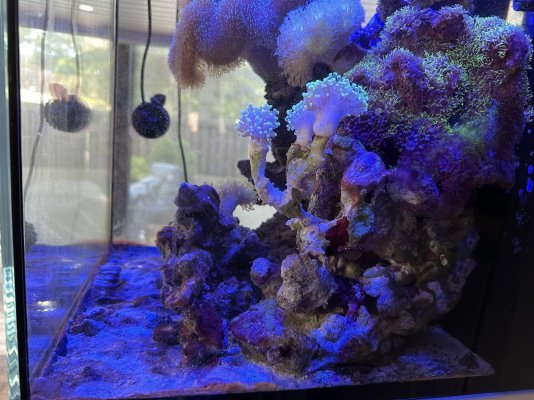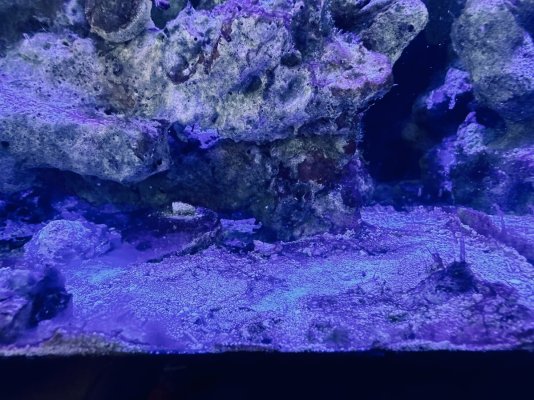5yo 20g max nano from facebook marketplace, some cyano and minimal sand.
Close-up pic of some gunk, an alarming-looking worm, and a goby




Not much sand at bottom (definitely less than 0.5”, some bare spots). Previous owner mentioned I may want to take more out. My current plan is to remove as much old sand as possible and add live sand and start dosing microbacter7 and clean. Trying to get beneficial bacteria to out-compete uglies as well as provide a better habitat for goby (I also think sand looks better).
Plan is to remove as much old sand as possible (any tips?), scrub rocks, run 100 micron sock, and add live sand (aragalive special grade most likely). I’ll also start dosing microbacter7 and microbacter clean.
Does this sound like a reasonable plan? Any suggestions?
Should dose w/ chemiclean or something else to knock cyano (or dinos?) down before adding live sand, or only do so a few weeks after adding sand if still having problems? I normally do 10-20% WC per week.
I’ve also been facing double zeros on PO4/NO3. I am trying to address that by increasing feeding and may start feeding phyto. I’m trying to avoid having to dose Nitrates and Phosphates as part of regular dosing and feeding. Should I try running the skimmer less or removing some filter media or is that too many changes at once?
Open to any thoughts, warnings, tips, etc! I was currently planning on doing this along w/ a 20-25% water change this weekend.
Close-up pic of some gunk, an alarming-looking worm, and a goby


Not much sand at bottom (definitely less than 0.5”, some bare spots). Previous owner mentioned I may want to take more out. My current plan is to remove as much old sand as possible and add live sand and start dosing microbacter7 and clean. Trying to get beneficial bacteria to out-compete uglies as well as provide a better habitat for goby (I also think sand looks better).
Plan is to remove as much old sand as possible (any tips?), scrub rocks, run 100 micron sock, and add live sand (aragalive special grade most likely). I’ll also start dosing microbacter7 and microbacter clean.
Does this sound like a reasonable plan? Any suggestions?
Should dose w/ chemiclean or something else to knock cyano (or dinos?) down before adding live sand, or only do so a few weeks after adding sand if still having problems? I normally do 10-20% WC per week.
I’ve also been facing double zeros on PO4/NO3. I am trying to address that by increasing feeding and may start feeding phyto. I’m trying to avoid having to dose Nitrates and Phosphates as part of regular dosing and feeding. Should I try running the skimmer less or removing some filter media or is that too many changes at once?
Open to any thoughts, warnings, tips, etc! I was currently planning on doing this along w/ a 20-25% water change this weekend.



















